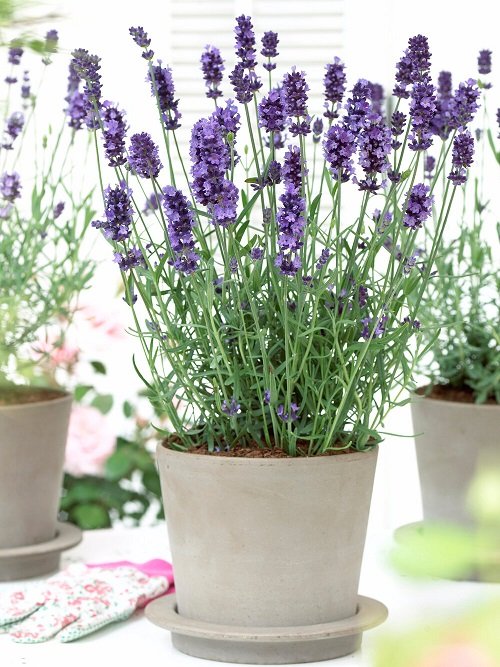Hey there, fellow plant lovers! Want to know about Red Hot Poker Plant Care in detail? Read on to get all the information!
Red Hot Poker Plant is valued by gardeners for its upright structure, bright, eye-catching blooms, and ability to attract pollinators like bees and butterflies to the garden. Here’s everything about growing it.
Botanical Name: Kniphofia
USDA Zones: 5-10
To Know More About Such Perennial Flower Plants, Check Here
Red Hot Poker Plant Information
Red Hot Poker Plant is a stunning perennial native to South Africa. It is widely loved due to its striking, torch-like flowers, which resemble the shape of a poker and bloom in shades of red, orange, and yellow. These flowers appear on tall spikes that can reach up to 4 feet in height, making them a fantastic focal point in any garden or landscape.
In addition to its ornamental value, Red Hot Poker Plant is also popular for its medicinal uses, as it can treat a range of ailments, including stomach problems and fever.
The plant’s long flowering period, from mid-summer to early fall, also makes it a popular choice for adding some late-season color to garden beds and borders.
Here’s an extensive list of the Best Medicinal Plants with their Benefits and uses
Types of Red Hot Poker Plant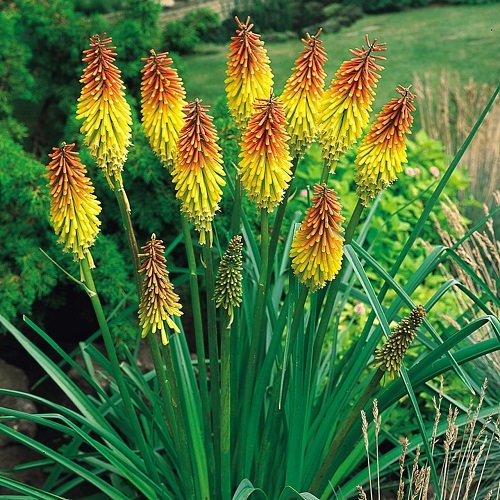
Here are some of the most popular types:
- Kniphofia Uvaria – This is the most common type of red hot poker plant, with tall spikes of yellow, orange, and red flowers.
- Kniphofia Rooperi – It has long spikes of coral-red flowers and is more tolerant of wet conditions than other types.
- Kniphofia ‘Alcazar’ – This cultivar has tall spikes of deep orange-red flowers and is a popular choice for garden borders.
- Kniphofia ‘Flamenco’ – This variety has bright red and yellow flowers that bloom in succession, creating a long-lasting display.
- Kniphofia ‘Tawny King’ – It features tall spikes of coppery-orange flowers and is well-suited for sunny locations.
- Kniphofia ‘Green Jade’ – This variety has pale green flowers that gradually turn yellow as they mature, creating a unique color gradient.
- Kniphofia ‘Nancy’s Red’ – This cultivar has bright red flowers and is a popular choice for attracting hummingbirds to the garden.
Container Size for Red Hot Poker Plant
A 10-12 inches pot will be good to start the plant. Depending on the growth and spread, re-pot it into one size bigger container than the old one in 2-3 years.
Here are Some Creative Ideas for Balcony Garden Containers.
Propagating Red Hot Poker Plant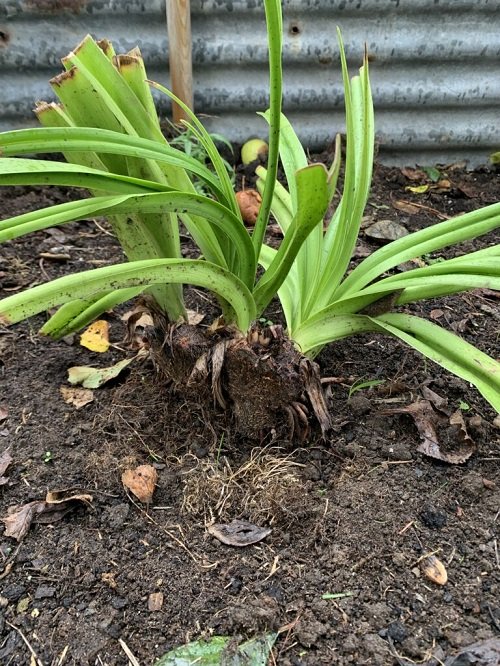
By Division
- Dig up the plant and separate the clumps, making sure each clump has roots attached.
- Plant each clump in well-draining soil in a location with full sun or partial shade.
- Water the medium well and keep it moist until the plant gets established.
By Seeds
- Collect seeds from the plant when the seed pods turn brown and start to split open.
- Sow them in well-draining soil, and cover them lightly with soil.
- Keep the soil moist and make sure the seeds get plenty of indirect and bright light.
- They should germinate in a few weeks.
- When the seedlings are large enough, transplant them into individual containers or into the ground.
Check that One Secret to Grow Any Plant From a Cutting, Here
Growing Requirements of Red Hot Poker Plant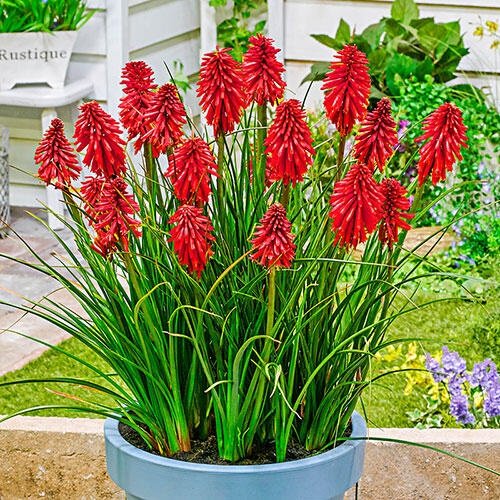
Location
If you want the best flowers and growth, make sure the plant gets a minimum of 5-6 hours of direct sunlight every day. You can also keep it in a bit6
of shade, but it won’t bloom as much. Also, if you live in a warm location, keep it safe from the harsh afternoon sun.
Soil
Red hot poker plants prefer well-draining, light, and slightly acidic soils. The growing medium should also be rich in organic matter. A soil pH of 6.0-7.0 is ideal.
Adding a layer of mulch around the plant will help to retain moisture and keep weeds at bay.
Water
It is a drought-tolerant plant, so ensure you are never watering it on a daily basis. Always allow the topsoil to go dry before you moisten the growing medium again.
Temperature and Humidity
Ideally, red hot poker plants grow best in temperatures between 60 and 90°F (15-32°C). They can tolerate temperatures as low as 50°F (10°C).
Also, the plants prefer dry conditions, and high humidity can lead to fungal problems.
Red Hot Poker Plant Care
Fertilize
The Red Hot Poker Plant is not at all fussy when it comes to feeding and can do well without it too. A light application of a balanced fertilizer once or twice during the growing season is all it needs.
Make sure to follow the manufacturer’s directions for application and dilution. A light application of compost or mulch in the spring is also beneficial to this plant.
Pruning
The Red Hot Poker Plant is a perennial that requires very little pruning. In fact, it is generally recommended to avoid pruning this plant unless absolutely necessary.
The only times pruning may be necessary are if the plant becomes overly large or unkempt. In these cases, it is best to prune back the plant in late winter or early spring before new growth begins.
It is important to avoid pruning during the growing season as this can damage the plant and reduce its flowering potential. When pruning, be sure to use clean, sharp pruning shears and remove only the necessary growth.
Pests and Diseases
The plant is generally a very hardy and disease-resistant plant, however, like all plants, it can be susceptible to aphids, spider mites, and thrips. These insects can be controlled by treating the plant with insecticidal soap or neem oil.
Fungal diseases, such as powdery mildew and rust can also affect the plant and should be treated with a fungicide, such as a sulfur-based product.
Additionally, over-watering can cause root rot, which is a fungal disease that can be difficult to treat. To prevent root rot, it is important to water the Red Hot Poker plant only when the top inch of soil is dry.
Find Out Natural Pesticides For Garden Here!
Companion Plants For Red Hot Poker Plant
1. Coneflowers
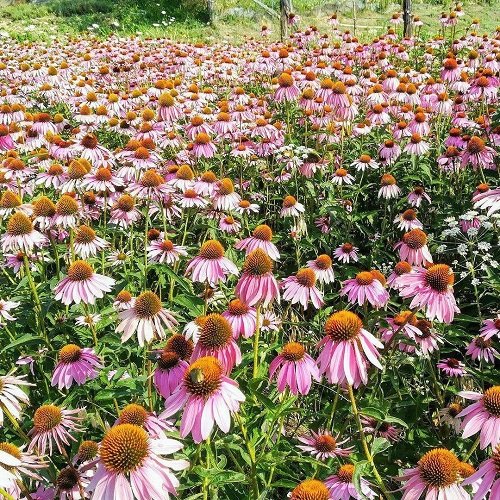
dumia_costruzionediunsogno
These plants produce daisy-like blooms that attract bees and butterflies, and they can thrive in similar growing conditions to Red Hot Poker Plant.
Find the Best Coneflower Varieties Here
2. Black Eyed Susan
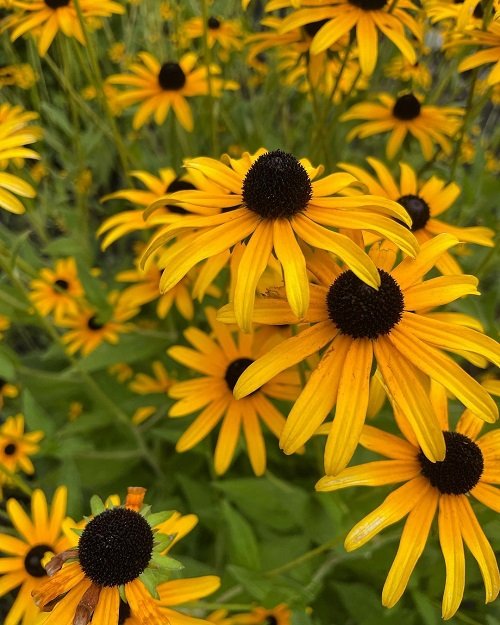
wildhorizonstudios
These plants are hardy and easy to grow, with golden yellow blooms that complement the fiery orange or red blooms of the Red Hot Poker Plant.
3. Sedums

gardenia
These succulents are drought-tolerant and come in a range of colors and textures, making them a great choice for adding interest and variety to your planting bed.
Look at the Most Beautiful Sedum Varieties Here
4. Ornamental Grasses
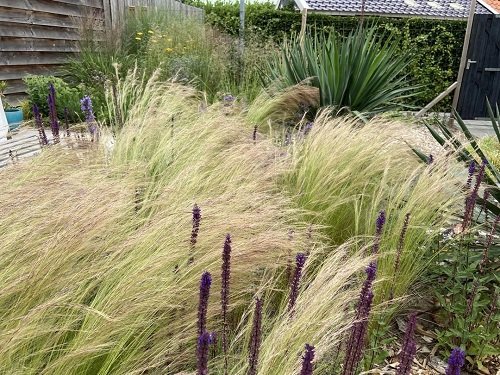
zepolean_plants
Tall, wispy grasses like feather reed grass or switchgrass can complement the bold, upright structure of the Red Hot Poker Plant and provide a nice contrast to its spiky blooms.
Find the Best Ornamental Grasses Here
5. Lavender
These fragrant, purple-blue plants are also drought-tolerant and can thrive in similar growing conditions, making them great companion plants for Red Hot Poker Plants.
SRC: https://balconygardenweb.com/



